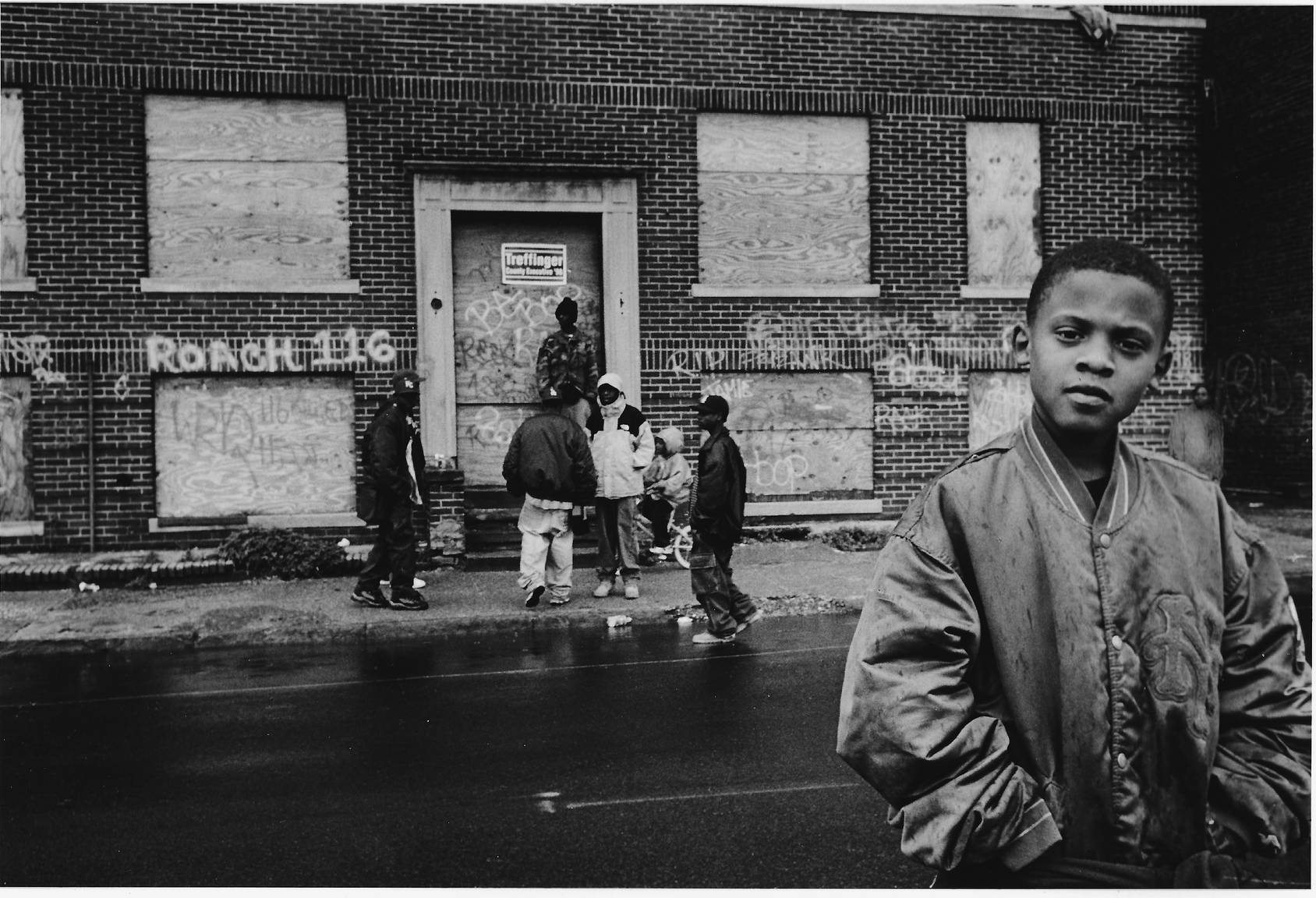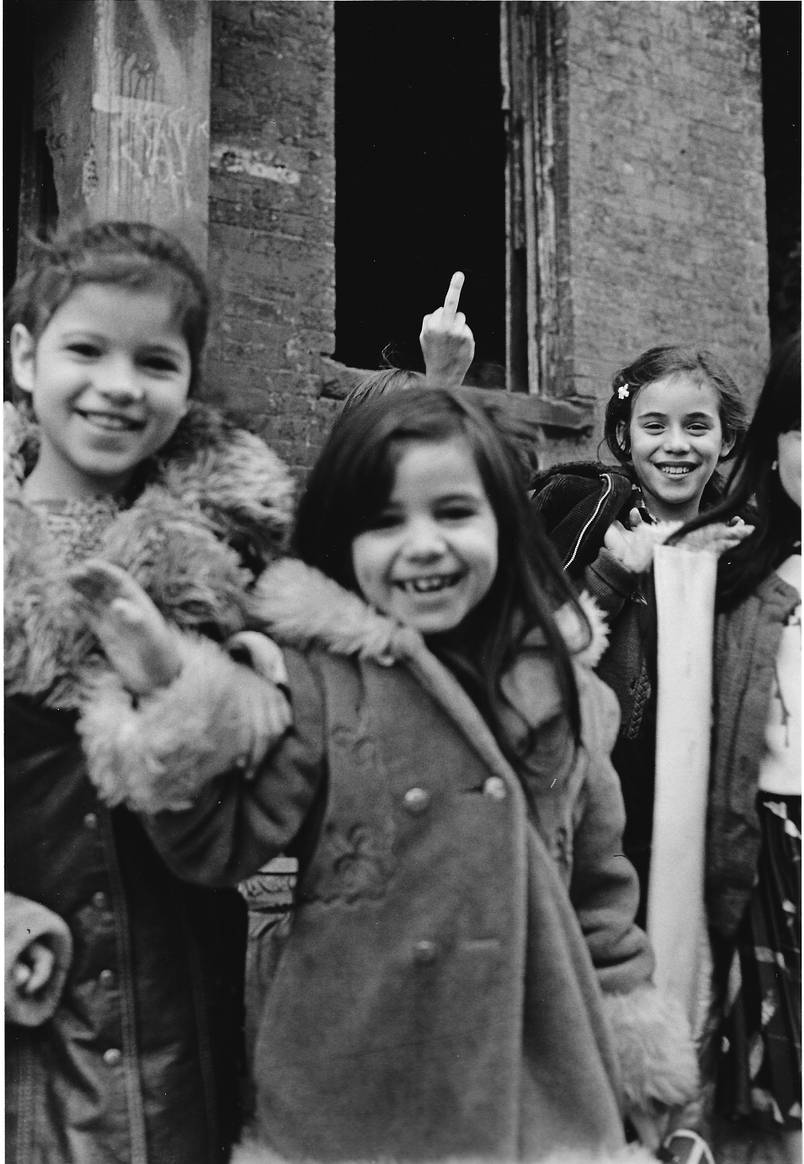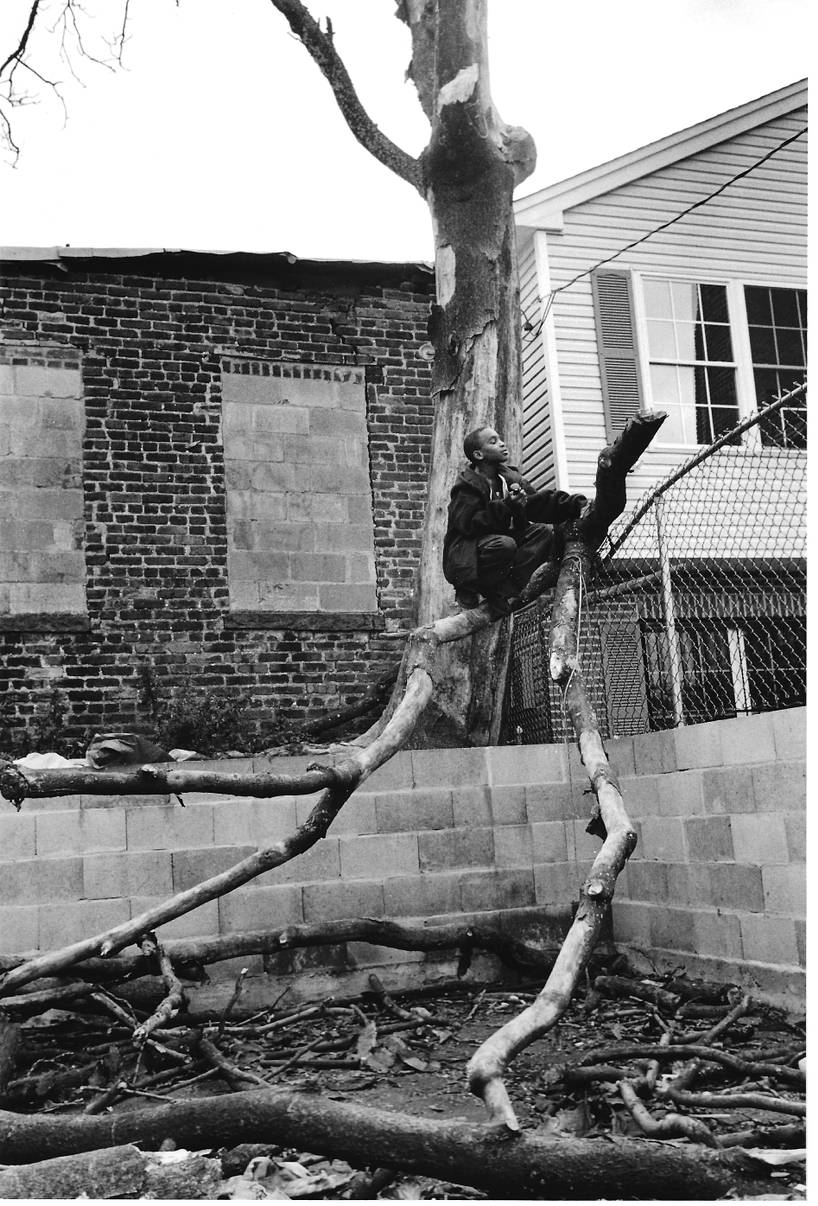Life on the Street: Documentary Photographer Helen M. Stummer
1 15 Share TweetWe got a chance to speak with powerhouse street photographer Helen M. Stummer. A documentary photographer who's work details life on East 6th Street in New York City. Shooting in black and white, her photos document a critical time in the history of New York. With her work being displayed at ICP gallery at Mana Contemporary in Jersey City until June 29, 2018, we were lucky enough to ask her some questions about her work and the exhibition.
Hi Hellen! First, How did you get started in photography?
I signed up for a class at the International Center for Photography. At that time, the school for Concerned Photography was on East 94th Street and Fifth Ave.
I was a painter and wanted to learn how to use my camera to take pictures of things I wanted to paint. I loved to paint. As a class assignment, I was sent to the Children’s Aid Society on East 6th Street to practice photographing children. That huge decision to take the risk and go changed my life.
In 1976, The New York Times called East 6th Street one of the meanest streets in America. Here I was, a suburbanite, hardly knowing how to use my camera and I am walking down one of the meanest streets in America. I learned on my feet. Dealing with fear was huge. I photographed on East 6th from 1976 until 1980.
I then continued in Newark from 1980 to 2010 and many other places in between that I wrote about in my recently published book Risking Life and Lens: A Photographic Memoir. It took five years to finish and includes how I survived on the street, what I learned, and the stories I was told. It is also a memoir discussing the trauma of my growing up.
Street photography is such a special talent — what's your approach?
I was always respectful. Attitude is extremely important. I'm open. I do not have hidden cameras. I'm credible. I do whatever I say even if it is inconvenient. I listen. Learning is important. I always gave each person a print even though it was a lot more work for me. It is as good to give as it is to take. Always ask permission. It is rude not to. I recall early on when I was beginning that I was riding shot gun with a telephoto lens photographing people in Times Square and felt as though I was being involved. I learned on my feet. My basic nature came into play, my intuition. I photographed from my gut, not my brain.
From my first sight of East 6th Street as I stood in the Children’s Aid Societies doorway, I was curious how people survived in this world of chaos and terror that the environment had seemed like to me on that first day. I saw men standing in doorways dressed in dark clothes with grim expressions and I was sure they would kill me by pulling me into the building. Instead after a few months of asking residents for permission to photograph them, giving back the photographs and then photographing more and coming back each week with the new prints—the men became Pedro, Cornell and Joe. Respect turns strangers into friends. Normally when I saw men with that look of trouble—I crossed the street—instead i now went up to them and showed them photographs that i was carrying and asked if they knew anyone in the images. By this time they had forgotten their initial idea and i asked if i could photograph them. I returned a week later and gave them the prints. They were elated and I made more friends.
Often, I was asked what they should do. I said just be natural and act as though I'm not here. Or I noticed something they had done and told them to repeat whatever I had observed. Mostly they didn’t have a clue, so I would remind them that they were doing such and such and they tried to repeat it. It was never the same, but it was true to the spirit of what I had seen. My nervous system never allowed me to stay longer than five hours, but I kept returning week after week, sometimes two and three times a week, year after year. People have a short attention span and after I initially photographed them, I then took more. Those usually were the ones that seemed natural and captured a moment in the life they were immersed in.
The sense of injustice that surrounded the residents infuriated me and gave me the energy to pick up my Leica and document what I was witnessing. In these dangerous places, I was surrounded by kindness, elegance, courage and dignity. When the landlords saw me photographing, they began fixing some of the long time violations that residents were furtively complaining about. People in power often don’t do the right thing unless someone is watching. My photographs made the residents visible and gave them a voice and put joy in my heart. I am not a shoot and run photographer. I get involved. I believe there is no other way to create intimate moments of life in a world that I was conditioned to fear. To step outside my comfort zone and realize my passion and to know that was stronger than my fear.
How do you connect with your subjects with or without a camera?
I connect the same. I am real and genuine as much as possible. Anything else will be difficult to establish trust — we all know dishonesty — and there is nothing more powerful than the truth. This goes with how you relate to all folks. Being something that you are not is distasteful no matter who you are trying to relate to — even to yourself.
Who/what are your biggest inspirations as a photographer?
I quoted Lewis Hine in my first book No Easy Walk, Newark: 1980 - 1993 — “There were two things I wanted to do. I wanted to show the things that had to be corrected. I wanted to show the things that had to be appreciated.” I was also inspired by the work of Jacob Riis and Eugene Smith.
I strive to inspire to use my camera as a force for social change — to raise consciousness [and] bring more awareness to the world of injustice that is all around us. I believe we all need to do our part in whatever way we can to make this planet a better place and to lessen the suffering as much as possible. When we help others, we help ourselves. When we heal, our lives are enriched. We all want to be visible and to be seen as an individual. We should let our work reflect our contribution to these important ends. Life is difficult — not all bad or all good. No one gets it all. I have survived and dedicated Risking Life and Lens: A Photographic Memoir to all the people who helped me survive.
Do you have any particularly favorite photos? Can you pick a photo and tell us the story behind it.
On this sweltering August day on South 17th Street in Newark, everyone was wilted, wet with sweat and grime. Residents were seated in doorways to get out of the blaring sun and trying to catch a breeze that didn’t exist. The children hardly moved as they filled the sidewalks. I was just there as usual, relating.
Then, sashaying toward us, came this cool and beautiful young woman. I was enchanted and asked if I could photograph her. She looked at me as though I was a bug. I would have kissed her feet if I had to. She gave me a slight nod and said “one.” All my insecurities flew into formation. What to do? The sidewalks were filled with people and I knew the composition was all wrong with clutter. My nerves were frazzled, worried that she would walk away and be gone forever — I pressed the shutter. Terrible I knew. I desperately wanted to capture the power of her but was totally clueless about what to do. And knowing I already had used up my one chance and even had already taken two, the pressure of knowing what I wanted but not knowing how to get it was beyond horrid.
Then she walked up the stairs of the apartment next to me and put her hands on the railing — I was still down on the sidewalk — and I looked up as she turned to the side. I pressed the shutter as she struck this pose. Then she walked into the apartment building. She gave me this stance. It was a gift. I was elated.

I saw Qui for years afterwards. I thought of her as my angel as she helped me through some tight situations.
I had this image made up to a 40x30 size in Manhattan. By mistake, they made two and gave me bot]. I took it to her room on 14th Avenue. She was joyous and kept yelling "That’s it! That’s it!" Her mother said the photograph took up so much of the room and was so lifelike that it scared her in the night.
What is the most important thing you have learned from taking these photographs?
We are all basically the same, just individually different. How our environment has a great deal to do with our health, education, basic welfare, and attitudes toward self and others around you. I learned that people who are on a low income are incredibly wonderful. They survive situations that [would cause] most suburbanites [to] go stark-raving mad. The fear of being killed at any second by a robber, the police, or someone angry for being disrespected is real. There is no safety. That is something suburbanites take for granted.
But I must say, we need to question our assumptions — assumptions we have been taught as true. Learning first hand about a world different than my own was the most incredible growing experience. It wasn’t secondhand like on TV, reading, movies, or neighbors telling me what was going on when they were also brainwashed into believing the myths. I saw firsthand how much the impoverished are stereotyped and racist attitudes are prolific. I learned how much we blame the victim for situations not their fault [because] it gives us an out for not getting involved. It allows the powers to continue their injustices and violations toward people who are stuck in these environments without choice.
I saw how people believe that if you live in a bad neighborhood, you are a bad person. But I know that living in a good neighborhood doesn’t automatically make good people. I saw how [differently] police treated folks in different neighborhoods. How you go to jail for the same offense in poor areas compared to it being called a prank in a good one. The book Black Like Me clearly showed how the accident of the color of your skin will dictate your life’s experiences. And until we change measuring the yardstick of success with money, violations and greed and injustice will continue to thrive.
Check out more of Helen's work on her website and her show at the ICP gallery at Mana Contemporary in Jersey City until June 29, 2018.
written by sragomo on 2018-05-20






































One Comment